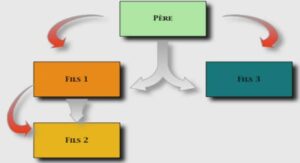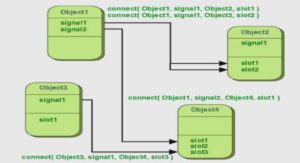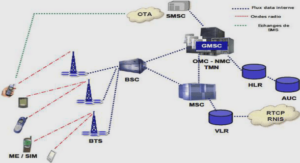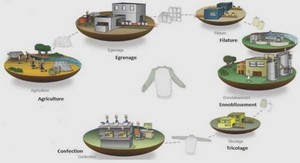Effets de l’anémie maternelle et ses causes sur le
développement cognitif des enfants agés de 1 an au
Bénin
Background: Anemia, Pregnancy and Infant Cognition
Anemia is a pathological condition that is depicted by a decrease in red cell mass resulting from either insufficient production of RBCs or excessive removal of RBCs via blood loss or increased cell death. Since RBCs contain Hb, the protein responsible for the transport of oxygen, a decrease in RBCs implies inadequate oxygen transport to tissues and organs. Clinically, anemia is diagnosed by measuring the concentration of Hb in blood (in g/dl or g/L) or by measuring hematocrit levels (i.e. the proportion of the volume of RBCs in whole blood in %l/L).49 In order to assess population prevalence of anemia using Hb levels, the cyanomethemoglobin method or the hemocue method is used.21 The WHO approves both methods for surveys in low or moderate resource-limited areas.21 Determination of hematocrit levels is performed by centrifugation. To diagnose anemia, cut-offs are set for both Hb levels and hematocrit levels below which an individual can be said to be anemic. The cut-offs for hematocrit and Hb are different for different groups of individuals as a number of physiological factors influence the levels of Hb. The WHO thresholds for anemia diagnosis using Hb and hematocrit levels are shown in Table 1.1.
Definition of Anemia by Age
Children between 6 months and 14 years generally have lower Hb levels compared to adults as shown in Table 1.1 mainly because children have lower red blood cell counts. After birth, the concentration of Hb measured in cord blood is dependent on factors such as the gestational age at birth and maternal hematologic factors.50 Neonates have very high Hb levels, mainly fetal hemoglobin (HbF) which has a very high affinity for oxygen.51 By the 6th -12th months after birth, adult Hb almost completely replaces HbF. The switch from the high oxygen-affinitive HbF into low oxygen-affinitive Hb does not come at an oxygen-cost to the infant. Instead, the reduced oxygen affinity allows for increased oxygen unloading to tissues.52 Due to the increased demand for oxygen and other nutrients for developing tissues, children are among the group that is highly at risk of anemia. Table 1.2 shows the mean evolution in Hb and hematocrit levels in healthy infants younger than 6 months.
Definition of Anemia by Gender
Prior to the age of menarche, healthy females and males do not show any significant difference in Hb concentration.54 For this reason, the loss of blood during menstruation in adult women has been explained to be a reason for the observed differences in hemoglobin concentration.55 A study in Jos, Nigeria following nulliparous women showed a significant decline in mean Hb concentration during the menstruation phase (120.5 g/L) compared to the ovulatory (132.7 g/L) and follicular phases (122.3 g/L) of the menstrual cycle.56 1.1.3 Definition of Anemia by Pregnancy Status During pregnancy, although menstruation ceases, other physiological changes occur to alter Hb concentration. Beginning from the second month of pregnancy, plasma volume increases by about 50%, peaking between 28 to 34 weeks of gestation, with a disproportionate 20 to 30% increase in red cell mass, which results in a decrease in Hb concentration.42 It is for this reason that Hb cut-off for pregnant women is 10 g/L lower than that of adult childbearing females. The CDC sets the cut-off even lower to 105 g/L for pregnant women at the second trimester.57 Detailed physiopathology of anemia pregnancy will be explained in Chapter 1.2.2
Definition of Anemia by Altitude
The WHO cut-offs for diagnosing anemia as shown in Table 1.1 are only applicable at sea level. Above sea level, there is an inverse relationship between altitude and ambient barometric pressure. The low pressure at high altitudes results in a decrease in the partial pressure of oxygen.58 To compensate for this plummet in oxygen levels, at high altitudes, there is an increase in erythropoiesis which results in an increase in circulating Hb levels and the oxygen carrying capacity of the blood.59 In order to prevent under-diagnoses of anemia due to the influence of altitude on Hb concentration, it is essential to account for altitude in the cut-off for diagnosing anemia among residents of high altitudes. Cohen and Haas60 also propose a different formula for altitude adjusted Hb concentration among non-pregnant women as shown below:Altitude-specific Hb and hematocrit adjustments to complement the cut-offs in Table 1.1 have been proposed by the CDC (Table 1.3)
Acknowledgementsi |




